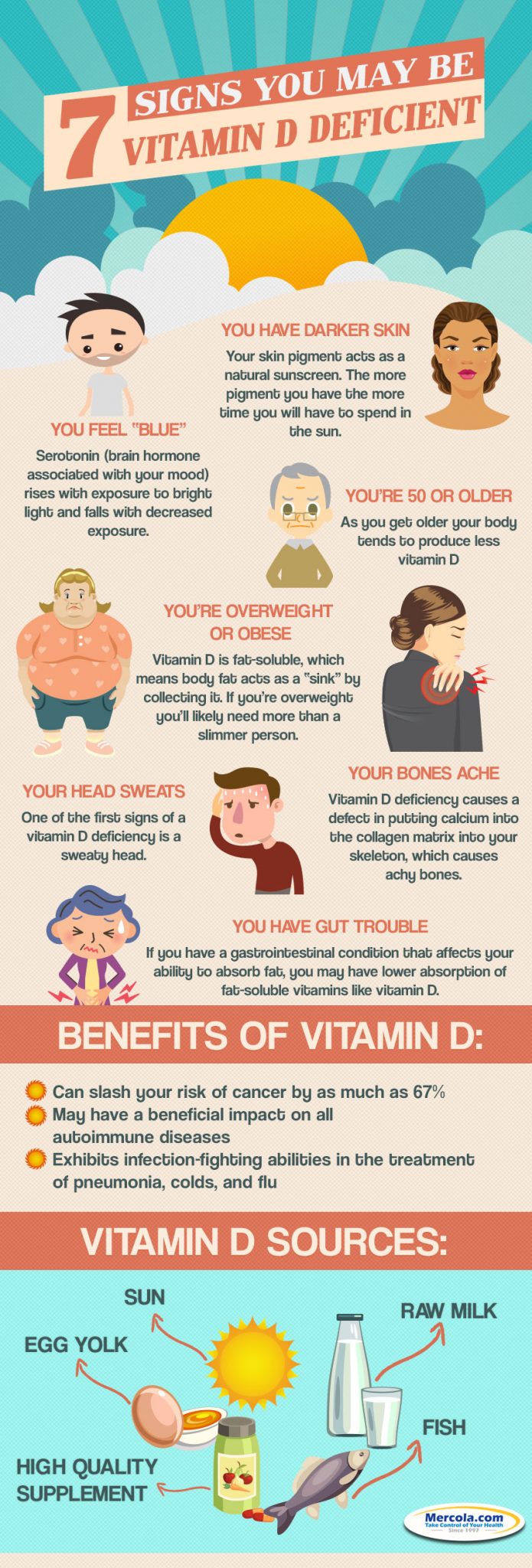May 1st, 2018
Contributing writer for Wake Up World
Vitamin D deficiency is associated with a substantially increased risk of dementia, including Alzheimer’s disease, according to a growing body of research.
Vitamin D, once primarily known for its role in bone health, has traversed into the mainstream as one of the most important vitamins for overall health and disease prevention. From your heart to your gut and, as accumulating research shows, your brain, making sure you’re getting enough vitamin D is one of the simplest ways to make a difference in your health.
Worldwide, an estimated 47 million people are living with dementia, and this is expected to increase to 75 million by 2030.1 Dementia, of which Alzheimer’s disease is the most common form, refers to memory loss and other changes in cognitive abilities that make performing everyday activities difficult. Research suggests, however, that you can lower your risk of this debilitating disease by optimizing your vitamin D levels.
[pro_ad_display_adzone id=”110028″]
Low Vitamin D Increases Dementia Risk
In a six-year study that followed more than 1,600 people, vitamin D deficiency was found to have a substantially increased risk of dementia, including Alzheimer disease.2 In fact, people who were severely deficient in vitamin D had a 122 percent increased risk of developing dementia, whereas those who were moderately deficient were at a 53 percent greater risk.
For Alzheimer’s disease specifically, being severely vitamin D deficient was linked to a 122 percent increased risk compared to a 69 percent increase for those who were moderately deficient.3
In 2017, Austrian researchers conducted a meta-analysis of five studies and further revealed that people with a serious vitamin D deficiency have a higher risk of dementia than those with sufficient vitamin D. “The results of this systematic review show that low vitamin D levels contribute to the development of dementia,” the researchers noted.4
Another study, this one published in JAMA Neurology, also linked vitamin D status with rates of cognitive decline, finding, “Low VitD [vitamin D] status had an accelerated decline in cognitive function domains in ethnically diverse older adults, including African American and Hispanic individuals who exhibited a high prevalence of Vitamin D insufficiency or deficiency.”5 In addition:
- Higher intake of dietary vitamin D was associated with a lower risk of developing Alzheimer’s disease among older women6
- Among the elderly (including the “oldest-old”) in China, low vitamin D levels were associated with increased risk of cognitive decline and impairment7
- Low vitamin D levels among older women in the U.S. were associated with a higher risk of cognitive impairment and decline8
It’s worth noting that in many cases a sufficient vitamin D supply was defined as greater than or equal to 50 nmol/L, or 20 ng/ml, which is still far too low in many experts’ opinions. For comparison, I recommend a vitamin D level of 40 to 60 ng/mL for optimal health and disease prevention. Yet, the fact that brain health is intricately tied to vitamin D levels remains, with studies suggesting too little vitamin D will lead to “brain structural abnormalities, cognitive decline and incident dementia.”9
It’s also been suggested that while low vitamin D is linked to poorer cognition, vitamin D supplementation does not always show a clear benefit. This could be because there is a “therapeutic age window” during which vitamin D helps prevent disease,10 and if your levels are too low during that time, you could miss your window to stave off illness.
Researchers are now looking into uncovering the optimal timing and duration during which optimizing vitamin D clearly helps protect against dementia, but a sensible solution is to monitor your levels and keep your levels optimized throughout your life.
Vitamin D is Neuroprotective
Vitamin D is a steroid hormone that influences virtually every cell in your body, including those in your brain. Vitamin D also plays a major role in neurotransmission. When you have enough vitamin D in your body, it binds to vitamin D receptors located throughout your body, thereby acting like a key that opens the proverbial door.
The vitamin D receptor complex can go deep inside the DNA, where it recognizes the tell-tale sequence of code that instructs the vitamin D receptor complex to either turn the gene on (making it active) or off (making it inactive). Vitamin D is known to regulate many genes, and vitamin D receptors are broadly expressed in the brain.11 In addition, researchers explained in the Journal of Gerontology:12
“Vitamin D is a secosteroid hormone necessary for maintaining good musculoskeletal health; its deficiency is associated with increased risks of cardiovascular and neurodegenerative diseases. Vitamin D is primarily synthesized in the skin upon exposure to sunlight; smaller amounts are obtained through dietary intake. More recently, enzymes responsible for the synthesis of its active form have been found to be distributed throughout the human brain.
These enzymes facilitate on-site calcium homeostasis, immunomodulation, antioxidative mechanisms, and beta-amyloid clearance by vitamin D, thereby conferring a protective effect on the central nervous system. This growing body of evidence suggests that vitamin D has a neuroprotective function that is potentially important for the prevention of cognitive decline.”
Further, vitamin D has been reported to increase the expression of LRP-1, a protein that helps clear amyloid beta, a toxic protein linked to Alzheimer’s, from the brain.13 “Amyloid clearance majorly contributes to progression of Alzheimer’s disease,” researchers wrote in the Journal of Chemical Neuroanatomy, and by increasing LRP-1 expression may “simultaneously increase amyloid clearance.”14
What’s the Best Way to Optimize Your Vitamin D Level?
Ideally, get regular exposure to the sun in short increments, gradually building up your time safely. As part of my healthy sunbathing tips, I recommend building up your tolerance by starting early in the spring, with as few as five minutes of exposure time, and gradually increasing the time you spend in the sun to avoid getting burned.
Once your tolerance has been built up, aim for 15 to 30 minutes of unprotected sun exposure two to four times per week, around mid-day, to maximize vitamin D production and other benefits of sun exposure. It’s nearly impossible to give any firm recommendations for how long you need to stay in the sun to optimize vitamin D production, however, as it varies greatly depending on a number of factors, such as:
- Age
- Weight
- Skin color and/or current tan level
- The use of sunscreen
- Antioxidant levels and diet in general
- Season
- Time of day
- Surface reflection
- Cloud cover and pollution
- Latitude and altitude (elevation)
- Ozone layer
While sunlight is the ideal way to optimize your vitamin D, winter and working indoors prevent more than 90 percent of those reading this article from achieving ideal levels. It’s estimated, for instance, that nearly 42 percent of U.S. adults are vitamin D deficient, and this is even higher in certain groups, including blacks (82 percent) and Hispanics (69 percent).15
[pro_ad_display_adzone id=”110030″]
People over the age of 50 also don’t produce vitamin D as easily by metabolizing sunlight, and their kidneys don’t convert vitamin D into a form their body can use quite as quickly, putting the elderly at heightened risk of deficiency as well.
A high-quality tanning bed is your next best option. [Avoid UVA-only beds, since UVB rays are necessary to create the precursors to vitamin D in the skin. — the Editor.] But if your circumstances don’t allow you to access the sun or a high-quality tanning bed, then you really only have one option if you want to raise your vitamin D, and that is to take a vitamin D3 supplement. As a general guideline, research by GrassrootsHealth suggests adults need about 8,000 IUs per day to achieve a serum level of 40 ng/ml. However, to find out what dosage is best for you make sure to get tested, and take steps to optimize your levels accordingly.
The vitamin D test you’re looking for is called 25(OH)D or 25-hydroxyvitamin D. This is the officially recognized marker of overall D status and is most strongly associated with overall health. The other vitamin D test available, called 1,25-dihydroxy vitamin D (1,25(OH)D), is not very useful for determining vitamin D sufficiency.
If you do opt for a vitamin D3 supplement, you also need to boost your intake of vitamin K2 through food and/or a supplement, as well as continue to get your levels tested to be sure you’re safely within the therapeutic range. Sensible sun exposure (and delaying showering to maximize absorption) is the best way to access this amazing nutrient. While it’s difficult to maintain optimal vitamin D levels from food sources, it is found in some foods, including:
- Sardines
- Mushrooms
- Organic pastured egg yolks
- Wild-caught Alaskan salmon
- Cheese
- Butter from grass-fed cows
- Beef liver
Optimizing Your Vitamin D Levels Will Protect Your Overall Health
When you take steps to optimize your vitamin D, it’s not only your brain health that will benefit. For instance, vitamin D is known to be crucial in several areas of your body, as a deficiency has been implicated in such problems as macular degeneration, lupus, bowel diseases, multiple sclerosis and chronic heart failure.16
In addition, optimizing your vitamin D levels is one of the absolute best flu-prevention strategies available and can also slash your cancer risk. Previous research found that a vitamin D level of 50 ng/ml was found to have a 50 percent lower risk of breast cancer.17 Further, researchers at University of California, San Diego School of Medicine reported that raising your serum 25-hydroxyvitamin D (25(OH)D) to 40ng/ml can slash your risk of all invasive cancers by 67 percent.18
Vitamin D also does wonders for your heart, as it triggers the production of nitric oxide, a molecule that helps control blood flow and prevent blood clot formation within your blood vessels. Further, vitamin D significantly reduces oxidative stress in your vascular system, which can prevent the development of heart disease.19
Beyond Vitamin D: How to Prevent, and Possibly Reverse, Alzheimer’s
It’s often said that Alzheimer’s disease is incurable and there’s no known cause. A more accurate statement would be that there are many causes, and, if you address the specific factors causing the cognitive decline, it is possible to prevent and possibly reverse this disease.
Exercise to increase brain-derived neurotropic factor (BDNF), stress reduction, optimizing your sleep, which is critical for cognitive function, and nutritional support are all crucial. Important nutrients include animal-based omega-3 fats, magnesium and fiber, in addition to vitamin D.
To prevent Alzheimer’s, you need to focus on a diet that powers your brain and body with healthy fats, not net carbs (total carbohydrates minus fiber), i.e., a ketogenic diet. In addition, there are exciting treatment strategies in the works, including photobiomodulation, in which stimulation of the brain with near-infrared light has been found to boost cognition and reduce symptoms of Alzheimer’s, including more advanced stages of the disease.
Electromagnetic exposures from wireless technologies are a crucial component that need to be addressed as well, as this type of radiation activates the voltage-gated calcium channels (VGCCs) in your cells, and the greatest density of VGCCs are in your brain, the pacemaker of your heart and male testes. It is my belief that excessive microwave exposure, glyphosate, which disrupts the blood-brain barrier, and mitochondrial dysfunction are among the most significant factors contributing to Alzheimer’s.
Optimizing your vitamin D level is an excellent start, but it’s best to take additional proactive steps to lower your risk of Alzheimer’s and other forms of dementia. To learn more, I recommend reading “The End of Alzheimer’s: The First Program to Prevent and Reverse Cognitive Decline,” which details a unique protocol by Dr. Dale Bredesen, director of neurodegenerative disease research at the University of California, Los Angeles (UCLA) School of Medicine.
The Role of Vitamin D in Disease Prevention
A growing body of evidence shows that vitamin D plays a crucial role in disease prevention and maintaining optimal health. There are about 30,000 genes in your body, and vitamin D affects nearly 3,000 of them, as well as vitamin D receptors located throughout your body.
According to one large-scale study, optimal Vitamin D levels can slash your risk of cancer by as much as 60 percent. Keeping your levels optimized can help prevent at least 16 different types of cancer, including pancreatic, lung, ovarian, prostate and skin cancers.
How Vitamin D Performance Testing Can Help Optimize Your Health
Is it any wonder then that no matter what disease or condition is investigated, vitamin D appears to play a crucial role? This is why I am so excited about the D*Action Project by GrassrootsHealth. Dr. Robert Heaney is the research director of GrassrootsHealth and is part of the design of the D*Action Project as well as analysis of the research findings.
GrassrootsHealth shows how you can take action today on known science with a consensus of experts without waiting for institutional lethargy. It has shown that, by combining the science of measurement (of vitamin D levels) with the personal choice of taking action, and the value of education about individual measures, one can truly be in charge of their own health.
In order to spread this health movement to more communities, the project needs your involvement. To participate, simply purchase the D*Action Measurement Kit and follow the registration instructions included. (Please note that 100 percent of the proceeds from the kits go to fund the research project. I do not charge a single dime as a distributor of the test kits.)
As a participant, you agree to test your vitamin D levels twice a year during a five-year study, and share your health status to demonstrate the public health impact of this nutrient. There is a $65 fee every six months for your sponsorship of this research project, which includes a test kit to be used at home, and electronic reports on your ongoing progress. You will get a follow up email every six months reminding you “it’s time for your next test and health survey.”
Internet Resources Where You Can Learn More
- Vitamin D for Public Health
- Free Vitamin D Educational Training for Medical Practitioners
- Scientific Consensus Paper Released; Assert Sunlight and Vitamin D are Essential for Human Health
- Vitamin D Resource Page
Where Do We Go From Here?
GrassrootsHealth is also undertaking a new project entitled the Protect Our Children NOW! (POC) project. The aim of this project is to acquire participation of at least 500 pregnant women in a community, and to increase their serum levels to the suggested level of at least 40 ng/ml based on a clinical trial by neonatologist Carol Wagner and vitamin D researcher Bruce Hollis.
In addition, the project will take these results in two years and “march” on the various institutions in the states and government to the March of Dimes, to demand that action be taken to protect the world’s next generation.
Among other items, the projects’ expected impact is likely to be a reduction in preterm births (in some cases up to a 50 percent reduction). The project already has the blessing of scientists and physicians at the Medical University of South Carolina (who are implementing it in their practices) and even from insurance companies.
Any community can implement this and make a difference for themselves and others. For further information contact Jen Aliano, Project Manager, at jen@grassrootshealth.org.
- 1 World Health Organization April 2017
- 2 Neurology August 6, 2014
- 3 Science Daily August 6, 2014
- 4 BMC Geriatr. 2017; 17: 16.
- 5, 9 JAMA Neurol. 2015 Nov;72(11):1295-303.
- 6 J Gerontol A Biol Sci Med Sci. 2012 Nov;67(11):1205-11.
- 7, 12 J Gerontol A Biol Sci Med Sci. 2016 Oct; 71(10): 1363–1368.
- 8 J Gerontol A Biol Sci Med Sci. 2012 Oct;67(10):1092-8.
- 10 J Am Geriatr Soc. 2017 Oct;65(10):2161-2168.
- 11, 13, 14 Journal of Chemical Neuroanatomy November 2017, Volume 85, Pages 36-42
- 15 Nutr Res. 2011 Jan;31(1):48-54.
- 16 Johns Hopkins Medicine
- 17 Anticancer Research February 2011: 31(2); 607-611
- 18 PLOS ONE, 2016; 11 (4): e0152441
- 19 International Journal of Nanomedicine January 19. 2018; 2018(13): 455-466
Recommended articles by Dr. Joseph Mercola:
- 5G Wireless Network – Amplified EMFs Coming to Your Neighborhood Soon
- Anxiety Overtakes Depression as No. 1 Mental Health Problem
- The Big Fat Surprise — Higher Cholesterol Levels Associated with Better Health
- How LED Lighting May Compromise Your Health
- Magic Mushrooms May Hold Key to Long-Term Relief from Anxiety and Depression
- Medical Errors: Still the Third Leading Cause of Death
- Photobiology: How Therapeutic Use of Full-Spectrum Light Can Improve Your Health
- Scientific Links Between Processed Foods and Depression
- How Sugar Harms Your Brain Health and Drives Alzheimer’s Epidemic
- Is Most Back Pain Caused by Repressed Emotions?
- Most Bottled Water Brands Contaminated with Microplastics
About the author:
Born and raised in the inner city of Chicago, IL, Dr. Joseph Mercola is an osteopathic physician trained in both traditional and natural medicine. Board-certified in family medicine, Dr. Mercola served as the chairman of the family medicine department at St. Alexius Medical Center for five years, and in 2012 was granted fellowship status by the American College of Nutrition (ACN).
While in practice in the late 80s, Dr. Mercola realized the drugs he was prescribing to chronically ill patients were not working. By the early 90s, he began exploring the world of natural medicine, and soon changed the way he practiced medicine.
In 1997 Dr. Mercola founded Mercola.com, which is now routinely among the top 10 health sites on the internet. His passion is to transform the traditional medical paradigm in the United States. “The existing medical establishment is responsible for killing and permanently injuring millions of Americans… You want practical health solutions without the hype, and that’s what I offer.”
Visit Mercola.com for more information, or read Dr. Mercola’s full bio and resumé here.
[pro_ad_display_adzone id=”110027″]









